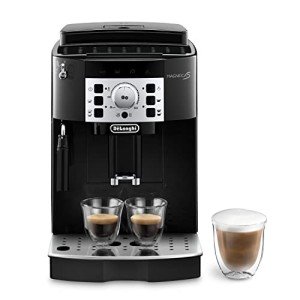Bean to Cup Espresso Machines: The Complete Guide
In the world of coffee enthusiasts, the bean to cup espresso machine represents the pinnacle of a quality developing experience. It combines the best coffee beans with advanced brewing innovation, enabling users to create café-quality espresso and coffee drinks from the convenience of their own kitchen areas. This post explores the functions, benefits, and shortcomings of bean to cup espresso machines, together with a choice of popular designs available in the market.
What is a Bean to Cup Espresso Machine?
A bean to cup espresso machine is an automatic coffee maker that incorporates the grinder, developing unit, and coffee shipment system into one system. Unlike standard espresso machines that need separate grinding devices and may need manual brewing strategies, bean to cup machines grind, brew, and give coffee in simple moments, making them easy to use and hassle-free.
Secret Features of Bean to Cup Espresso Machines
Here are necessary features that consumers must consider when searching for the perfect bean to cup espresso machine:
- Built-in Grinder: Freshly ground coffee is important for a fantastic cup. Many bean to cup machines come with an integrated mill that enables users to select grind size and dosage.
- Personalized Brewing Options: Quality machines offer adjustable settings for developing temperature level, coffee strength, and milk frothing capabilities, accommodating diverse tastes.
- User-Friendly Controls: Many machines include user-friendly touch screens or LCD displays for easy navigation in between brewing options.
- Automatic Milk Frothing: For those who delight in cappuccinos or lattes, some machines consist of automatic frothers, enabling creamy and steamed milk at the touch of a button.
- Easy Cleaning and Maintenance: Cleaning systems, such as detachable brewing systems and automatic cleansing cycles, are important for maintaining machine hygiene.
Advantages of Bean to Cup Espresso Machines
- Freshness: Since the machines grind coffee beans as needed, customers get the best coffee possible.
- Convenience: With a bean to cup machine, brewing coffee becomes an effortless process, needing bit more than journalism of a button.
- Flexibility: Many designs provide a variety of developing options, from espresso to coffees, making them flexible for every coffee choice.
- Space-Saving Design: By incorporating numerous functionalities into a compact design, bean to cup machines conserve counter space.
- Consistency: Automated procedures minimize human error, guaranteeing that every cup of coffee is consistently high quality.
Drawbacks of Bean to Cup Espresso Machines
Despite their numerous benefits, bean to cup espresso machines do have some drawbacks:
- Cost: High-quality machines can be pricey, presenting a barrier for lots of possible buyers.
- Size: Some models can be large, needing ample counter area.
- Repair and maintenance: While many machines have self-cleaning functions, preserving them and fixing issues can be complicated and pricey.
- Minimal Customization: Compared to conventional espresso machines, users might discover less control over particular components of the developing process.
Popular Bean to Cup Espresso Machines
Here is a choice of popular bean to cup espresso machines presently offered in the market:
| Brand & & Model | Grinder Type | Milk Frother | Cost Range * | User Rating |
|---|---|---|---|---|
| De'Longhi Dinamica | Burr | Handbook | ₤ 1,200 - ₤ 1,500 | 4.5/ 5 |
| Jura E8 | Cone-shaped | Automatic | ₤ 2,200 - ₤ 2,600 | 4.7/ 5 |
| Saeco PicoBaristo | Ceramic | Automatic | ₤ 1,000 - ₤ 1,300 | 4.6/ 5 |
| Breville Oracle Touch | Dual Boiler | Automatic | ₤ 2,000 - ₤ 2,400 | 4.8/ 5 |
| Philips 3200 Series | Ceramic | Manual | ₤ 800 - ₤ 1,000 | 4.4/ 5 |
* Prices are approximate and differ by seller.
Selecting the Right Bean to Cup Espresso Machine
When picking the ideal bean to cup espresso machine, customers must think about a number of aspects:
- Budget: Determine how much you're ready to purchase a machine; this will help limit your alternatives.
- Area: Measure your counter space to make sure the selected model accommodates your kitchen area layout.
- Preferred Beverage Type: If you favor milk-based drinks, try to find models with automatic milk frothers.
- Upkeep Preferences: Decide how much time you're prepared to commit to cleaning and maintenance.
Regularly Asked Questions (FAQs)
Q1: Do I require any unique coffee beans for a bean to cup espresso machine?
A1: While you can use any whole coffee beans, medium to dark roast beans typically work best for espresso. Freshness matters, so go with just recently roasted beans for optimal flavor.
Q2: Are bean to cup espresso machines easy to clean?
A2: Many designs include detachable components and self-cleaning functions. Nevertheless, regular maintenance, including descaling, is essential to keep the machine in top shape.
Q3: Can I make other coffee drinks besides espresso with a bean to cup machine?
A3: Yes, most bean to cup machines can brew numerous coffee drinks, including lattes, cappuccinos, and café au lait, thanks to their integrated developing and frothing abilities.
Q4: How long do bean to cup machines typically last?
A4: With proper upkeep, quality bean to cup machines can last in between 5 to 10 years, depending upon use and care.
Bean to cup espresso machines supply an excellent solution for coffee lovers seeking quality, convenience, and flexibility in their brewing process. While Coffee Machine From Beans may be substantial, the capability to delight in newly ground and brewed coffee in your home often exceeds the costs. Whether you're an espresso connoisseur or just beginning your coffee journey, purchasing a bean to cup espresso machine can significantly improve your at-home coffee experience.

